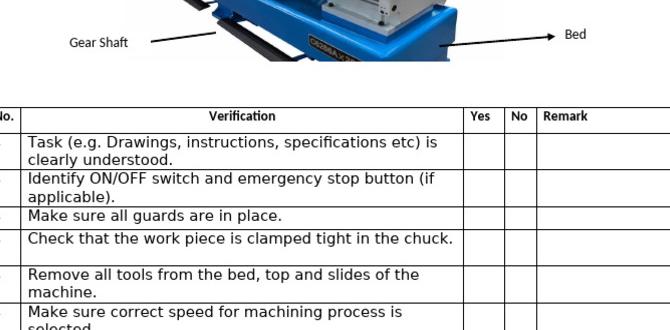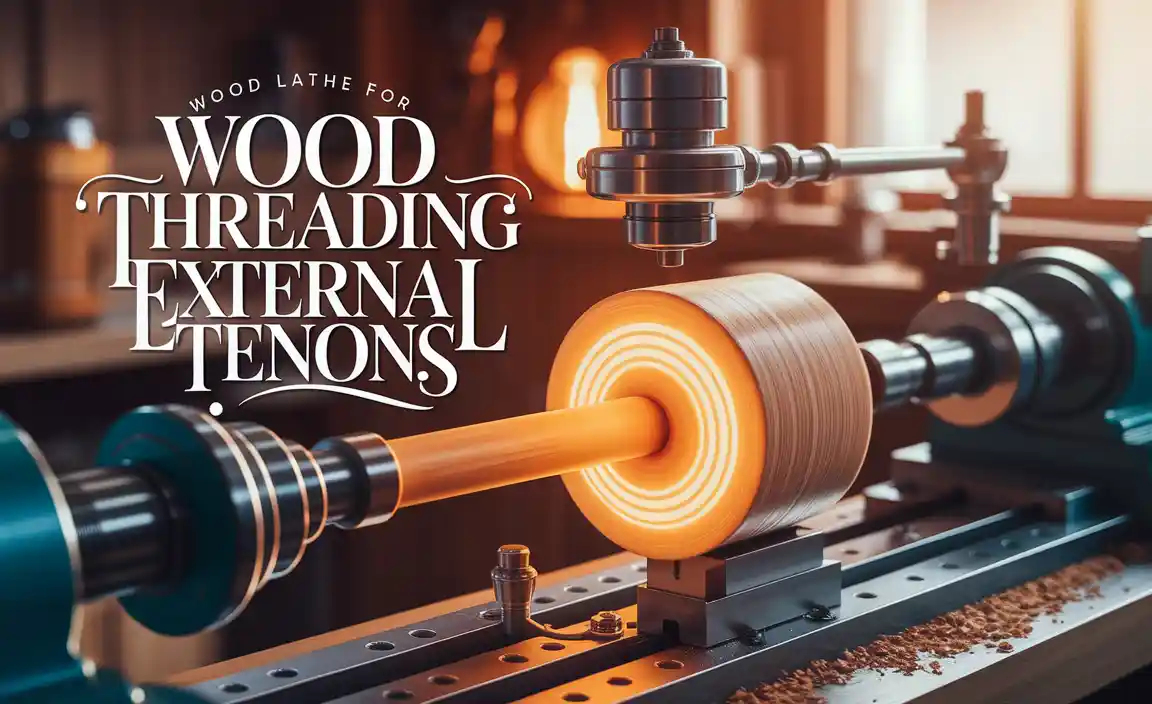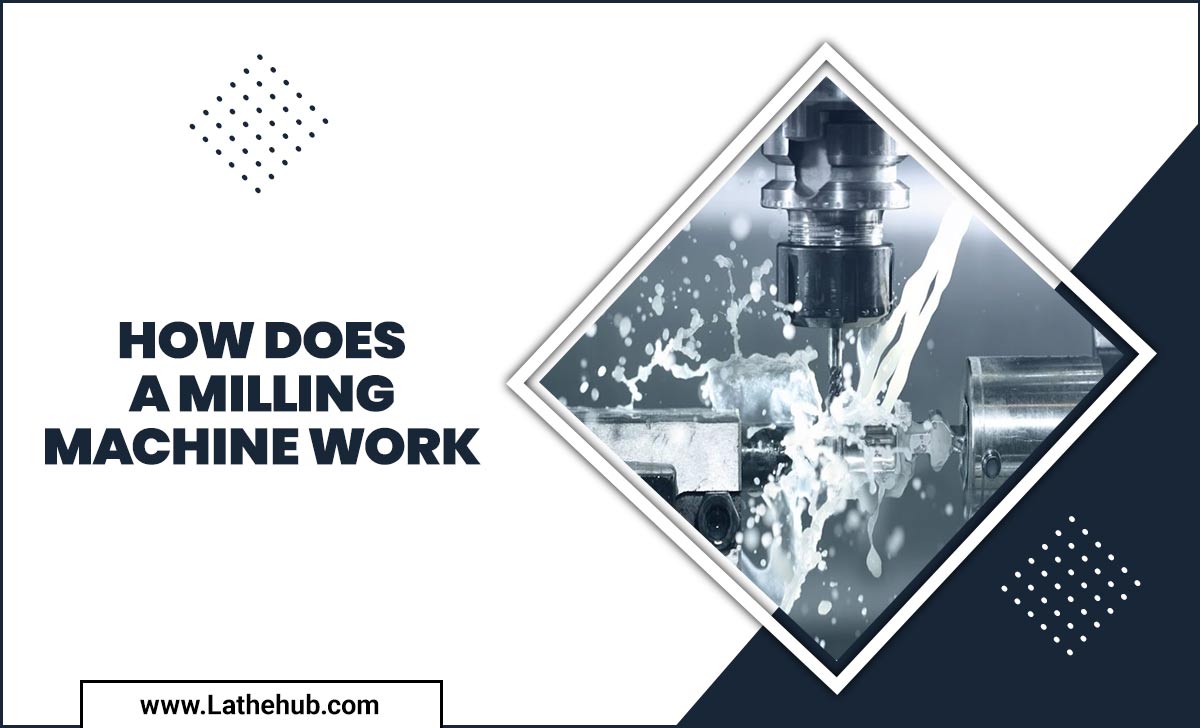Have you ever wondered how metal parts are made? Imagine a big machine spinning metal, shaping it just like clay in your hands. This magic happens on a metal lathe. If you are thinking about getting your own lathe, you’re not alone. Many people want to buy a metal lathe for their projects. But how do you choose the right one?
In this buying guide for metal lathe operations, we will help you understand what to look for when buying a lathe. There are many types, features, and sizes to consider. It can feel overwhelming at first. Yet, with the right information, you can find the best metal lathe for your needs.
Did you know that skilled workers can create amazing tools and parts using lathes? By learning how to operate one, you can unlock your creative side. Whether you’re a hobbyist or a professional, this guide will set you on the path to successful metalworking.
So, let’s dig in! Discover the essentials that will help you make an informed choice. You might just find that perfect machine waiting for you.
Buying Guide: Metal Lathe Operations Explained For Beginners

Buying Guide for Metal Lathe Operations
When you think about metal lathes, do you picture a quiet workshop full of creativity? A metal lathe is key for shaping metal into precise parts. This buying guide teaches you how to choose the right lathe, understand its features, and operate it safely. You’ll learn about sizes, speeds, and different types of attachments. Did you know picking the right lathe can improve your projects and save time? Making an informed choice ensures your metalworking journey is exciting and productive!Understanding Metal Lathes
Definition and function of metal lathes. Types of metal lathes: CNC vs. manual.Metal lathes are machines that shape metal. They turn metal pieces while cutting away parts to make them the right size or shape. This process is called turning, and it’s important in creating many metal objects.
There are two main types of metal lathes:
- CNC Lathes: These are computer-controlled. They can make complex shapes accurately and quickly.
- Manual Lathes: These are operated by hand. They give the user more control and are great for simple projects.
Each type has its own benefits. Choosing the right one depends on what you need!
What are metal lathes used for?
People use metal lathes to make parts for machines, tools, and vehicles. They are essential in industries like manufacturing and construction.
Key Features to Look For
Swing over bed and distance between centers. Spindle speed range and power rating.Choosing a metal lathe can feel tricky, but focusing on key features can simplify the process. First, consider the swing over bed and distance between centers. These affect the size of workpieces you can handle. Next, pay attention to spindle speed range and power rating. A higher speed allows for quick turning, while good power ensures the machine can tackle tough materials. Think of it as picking the right tool for your superhero projects!
| Feature | Importance |
|---|---|
| Swing Over Bed | Determines size of workpieces |
| Distance Between Centers | Max length of workpieces |
| Spindle Speed Range | Faster turning for efficiency |
| Power Rating | Handles tougher materials |
Types of Metal Lathes
Bench lathes vs. floor lathes. Specialized lathes for different operations.Metal lathes come in different types, each with unique features. Bench lathes are small and can fit on a table. They are great for beginners and small projects. Floor lathes, on the other hand, are bigger and more powerful. They handle larger jobs. There are also specialized lathes for specific tasks, like:
- Turret lathes for quick changes.
- CNC lathes for automated work.
- Slant-bed lathes for better access.
Choosing the right lathe depends on your needs and projects.
What should I consider when selecting a metal lathe?
Think about the size, power, and type of projects you will do. Consider how often you will use the lathe and what materials you will work with.
Choosing the Right Size
Factors influencing the size choice. Common size recommendations for various projects.Picking the right size lathe is like choosing the right pizza slice. Too small and you leave hungry, too big and you’ll need a bigger table! Consider things like project types and space. For small woodworking projects, a 12-inch lathe works great. For bigger items like furniture, go for 16 inches or more!
| Project Type | Recommended Lathe Size |
|---|---|
| Candle holders | 12 inches |
| Vases | 14 inches |
| Furniture legs | 16 inches |
Remember, a bigger lathe can handle larger items but might need more space. Choose wisely to avoid a project-sized headache!
Essential Accessories and Tools
Recommended toolsets for beginners and advanced users. Importance of chucks, faceplates, and tool holders.Having the right accessories and tools is vital for metal lathe operations. For beginners, a basic toolset should include cutting tools and measuring devices. Advanced users might want toolsets that offer more specialized parts. It’s essential to have chucks, faceplates, and tool holders. These items hold materials securely and help create precise shapes. Investing in quality tools leads to better results in every project.
What tools should beginners and advanced users have for metal lathe operations?
Beginners should start with basic cutting tools and a reliable measuring kit. Advanced users can opt for specialized sets that offer enhanced capabilities. Having good chucks and faceplates is key for accuracy.
Recommended Tools:
- Basic cutting tools
- Measuring devices
- Quality chucks
- Durable faceplates
- Effective tool holders
Price Range and Budgeting
Typical price ranges for various types of lathes. Tips for budgeting and avoiding overspending.Finding the right metal lathe can feel like searching for a needle in a haystack, especially when it comes to prices. A basic benchtop lathe might cost around $200, while more advanced models can go over $2,000! Here’s a quick look:
| Type of Lathe | Price Range |
|---|---|
| Benchtop | $200 – $600 |
| Mid-range | $600 – $1,500 |
| High-end | $1,500 – $5,000+ |
To keep your budget in check, set a limit before buying. Know what you need to avoid that tempting “fancy features” trap! And remember, the best lathe isn’t always the most expensive one. Sometimes, it’s like choosing a snack: stick with what you love!
Maintenance and Safety Tips
Regular maintenance practices for longevity. Safety gear and operational safety tips.To keep your metal lathe running smoothly, regular maintenance is key. Check belts and bearings often. A clean machine is a happy machine, so don’t forget to wipe off dust and chips! For safety, wear goggles and gloves to protect your eyes and hands. Always check that tools are secured and the area is clear before you start working—tripping over shavings is not part of the fun. Remember: safety first, accidents last!
| Maintenance Tip | Safety Tip |
|---|---|
| Clean the machine regularly | Wear safety goggles |
| Inspect belts and bearings | Keep the workspace tidy |
| Lubricate moving parts | Secure tools before use |
Where to Buy Metal Lathes
Online vs. local retailers. Advantages and disadvantages of each buying option.Finding the right place to buy a metal lathe is essential. You can shop online or visit local stores. Each option has its benefits and drawbacks.
- Online Retailers: They offer a wider selection, often at lower prices. You can shop anytime and read reviews. However, shipping time can be long.
- Local Retailers: You can see the lathe in person and get immediate help. It’s easier to return items. But, the choices might be limited, and prices could be higher.
Think about what’s best for you. Do you want convenience or personal touch? Both choices have their perks!
Where can I find metal lathes?
You can find metal lathes at hardware stores, specialty shops, and online marketplaces.
Customer Reviews and Testimonials
Importance of reading reviews before purchase. How to find trustworthy testimonials and ratings.Before you open your wallet, check what others say about their metal lathes! Reviews are like treasure maps leading to the best choices. They help you avoid traps and find real gems. Look for testimonials with detail, not just “It’s great!” or “I loved it!” The more specific, the better!
| Source | Rating | Trust Level |
|---|---|---|
| Customer Review Site 1 | 4.8/5 | High |
| Manufacturer Website | 4.0/5 | Medium |
| Social Media | 4.5/5 | High |
Finding trustworthy reviews is key. Look for multiple opinions and steer clear of sites that smell fishy. Remember, a good review can be the difference between a fun project and a frustrating mess!
Conclusion
In summary, a buying guide for metal lathe operations helps you choose the right tools and machines. Understand the key features, types of lathes, and your specific needs. This knowledge will lead to better projects and results. We encourage you to explore different models and read user reviews. Take your time to find the perfect metal lathe for your work!FAQs
Sure! Here Are Five Related Questions On The Topic Of Buying A Metal Lathe For Operations:Sure! Here are five questions you might ask about buying a metal lathe: 1. **What is a metal lathe?** A metal lathe is a tool that helps shape metal into different forms. 2. **Why do you need a metal lathe?** You need a metal lathe if you want to make metal parts or fix things. 3. **How do you pick the right one?** Look for one that fits your needs and budget. 4. **Where can you buy one?** You can find metal lathes at hardware stores or online. 5. **What should you know before using it?** Always read the instructions and wear safety gear.
Sure! Go ahead and ask your question, and I’ll be happy to help you with a simple answer.
What Key Features Should I Consider When Purchasing A Metal Lathe For My Workshop?When buying a metal lathe, think about the size you need for your projects. Check how much weight it can handle, as bigger lathes can do more. Look for good speed settings so you can work on different materials. Make sure it’s easy to use and has a safety guard. Lastly, read reviews to see what other users like about it!
How Do I Determine The Appropriate Size And Capacity Of A Metal Lathe For My Intended Projects?To choose the right size and capacity for your metal lathe, first think about the projects you want to make. Measure the biggest piece of metal you will work with. Most lathes can handle projects that are a little longer than that. Also, check the lathe’s horsepower. More power can help you work with bigger materials easier. Finally, talk to friends or experts for advice on what works best for your needs.
What Are The Differences Between Manual And Cnc Metal Lathes, And Which One Is Better For My Needs?Manual lathes are machines you run by hand. You control every step as you work on metal. CNC lathes are run by a computer, which helps you make things more quickly and precisely. If you want to create complex shapes easily, a CNC lathe is better. For simple projects, a manual lathe is great!
What Common Brands And Models Of Metal Lathes Are Recommended For Beginners Versus Experienced Users?For beginners, brands like Harbor Freight and Grizzly offer great metal lathes. Models like the Grizzly G0602 are easy to use. For experienced users, brands like Jet and Laguna have better machines. The Jet JWL-1442 is a top choice for skilled workers.
How Much Should I Budget For A Quality Metal Lathe, Along With Necessary Accessories And Tooling?You should budget about $1,000 to $3,000 for a good metal lathe. This price includes basic tools and accessories. You may need extra money for more advanced tools, like cutting bits. So, plan for around $1,500 to $4,000 total. Keep in mind that prices can change, so check before buying!
{“@context”:”https://schema.org”,”@type”: “FAQPage”,”mainEntity”:[{“@type”: “Question”,”name”: “Sure! Here Are Five Related Questions On The Topic Of Buying A Metal Lathe For Operations:”,”acceptedAnswer”: {“@type”: “Answer”,”text”: “Sure! Here are five questions you might ask about buying a metal lathe: 1. **What is a metal lathe?** A metal lathe is a tool that helps shape metal into different forms. 2. **Why do you need a metal lathe?** You need a metal lathe if you want to make metal parts or fix things. 3. **How do you pick the right one?** Look for one that fits your needs and budget. 4. **Where can you buy one?** You can find metal lathes at hardware stores or online. 5. **What should you know before using it?** Always read the instructions and wear safety gear.”}},{“@type”: “Question”,”name”: “”,”acceptedAnswer”: {“@type”: “Answer”,”text”: “Sure! Go ahead and ask your question, and I’ll be happy to help you with a simple answer.”}},{“@type”: “Question”,”name”: “What Key Features Should I Consider When Purchasing A Metal Lathe For My Workshop?”,”acceptedAnswer”: {“@type”: “Answer”,”text”: “When buying a metal lathe, think about the size you need for your projects. Check how much weight it can handle, as bigger lathes can do more. Look for good speed settings so you can work on different materials. Make sure it’s easy to use and has a safety guard. Lastly, read reviews to see what other users like about it!”}},{“@type”: “Question”,”name”: “How Do I Determine The Appropriate Size And Capacity Of A Metal Lathe For My Intended Projects?”,”acceptedAnswer”: {“@type”: “Answer”,”text”: “To choose the right size and capacity for your metal lathe, first think about the projects you want to make. Measure the biggest piece of metal you will work with. Most lathes can handle projects that are a little longer than that. Also, check the lathe’s horsepower. More power can help you work with bigger materials easier. Finally, talk to friends or experts for advice on what works best for your needs.”}},{“@type”: “Question”,”name”: “What Are The Differences Between Manual And Cnc Metal Lathes, And Which One Is Better For My Needs?”,”acceptedAnswer”: {“@type”: “Answer”,”text”: “Manual lathes are machines you run by hand. You control every step as you work on metal. CNC lathes are run by a computer, which helps you make things more quickly and precisely. If you want to create complex shapes easily, a CNC lathe is better. For simple projects, a manual lathe is great!”}},{“@type”: “Question”,”name”: “What Common Brands And Models Of Metal Lathes Are Recommended For Beginners Versus Experienced Users?”,”acceptedAnswer”: {“@type”: “Answer”,”text”: “For beginners, brands like Harbor Freight and Grizzly offer great metal lathes. Models like the Grizzly G0602 are easy to use. For experienced users, brands like Jet and Laguna have better machines. The Jet JWL-1442 is a top choice for skilled workers.”}},{“@type”: “Question”,”name”: “How Much Should I Budget For A Quality Metal Lathe, Along With Necessary Accessories And Tooling?”,”acceptedAnswer”: {“@type”: “Answer”,”text”: “You should budget about $1,000 to $3,000 for a good metal lathe. This price includes basic tools and accessories. You may need extra money for more advanced tools, like cutting bits. So, plan for around $1,500 to $4,000 total. Keep in mind that prices can change, so check before buying!”}}]}




